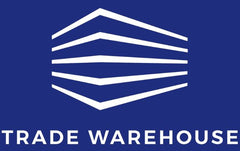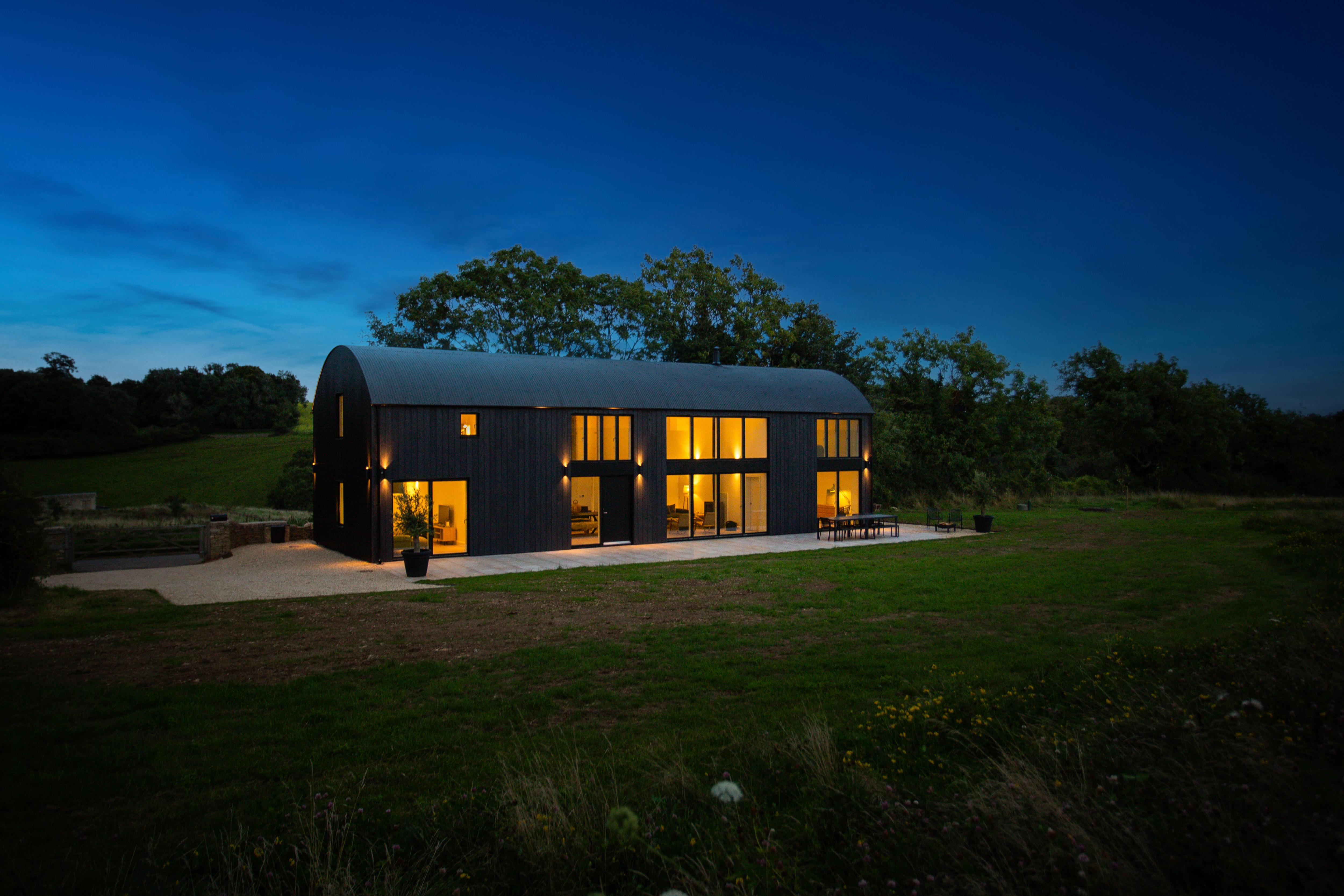Over the last decade, Dutch Barns have garnered recognition not only for their historical significance, but also for their potential in architectural innovation.
These steel-framed structures, which once served as utilitarian agricultural buildings, are now being embraced as part of the British landscape heritage.
Local authorities, spurred by a changing perspective, are increasingly acknowledging Dutch Barns as valuable monuments, and planning policies like Class Q and Class P have opened doors to numerous conversion opportunities.
Here at Trade Warehouse, we specialise in Dutch barn conversion, and have a team of experts dedicated to helping customers find the right materials for their project. Whether it be corrugated roof and cladding sheets, composite cladding boards, or the steel rainwater to match the colours used on the property, we can help. We keep a close eye on emails 7 days a week.


The images above show a Dutch Barn completed using the black corrugated metal sheets supplied by Trade Warehouse. They also went for matching black steel guttering. A PVC plastisol coating was used on the sheets, offering enhanced durability and protection against dirt or debris which may build up over time.

Another project completed by our sister company, The Metal Roof Company, who are experts in the field of standing seam metal roofing. The material used was GreenCoat PLX, an eco-friendly product from Sweden. Note this material is much more expensive than corrugated (which is more of a DIY material).
Understanding Dutch Barns: A Historical Perspective
Dutch Barns, constructed during the challenging times of the Depression era when resources were scarce, were a testament to creativity and practicality.
These barns often featured iron railway tracks as columns, riveted curved angle iron for roof trusses, and curved corrugated iron for roofing.
They stood as symbols of resilience, bearing witness to the agricultural history of Britain.
The Dutch Barn Conversion Process
With extensive experience in barn conversions, particularly Dutch Barns, Trade Warehouse and The Metal Roof Company have successfully completed projects across various regions, including Gloucestershire, Herefordshire, Shropshire, Wiltshire, Monmouthshire, Powys, and the Cotswolds.
While each conversion is tailored to the specific needs of the client and the structure itself, there are key steps to maximise planning approval:
Step 1: Designing for Natural Light
Dutch Barns, originally not intended for human habitation, often lack side panels. During conversion, new sides are designed to flood the interior with natural light.
Expansive windows or glazed doors can be strategically placed, although the curved roof profile can pose challenges for adding flat roof lights to the central area.
Step 2: Orientation and Room Placement
While there are no strict rules, considerations begin with the orientation. Principal rooms are positioned to maximise views and daylight.
Utility areas, plant rooms, and WCs are strategically located to benefit from borrowed light, creating a dynamic interplay between light and spacious living areas.
Step 3: Preserving Historic Integrity
Most architects' approach to gaining planning permission for Dutch Barn conversions is to preserve the existing structure whenever possible.
This approach helps maintain the historical authenticity of the structure, increasing the likelihood of planning approval.
Embracing the open structure and recognising the beauty in its utilitarian design are at the core of this philosophy.
Step 4: Designing with Rustic Charm
Dutch Barns, known for their modular construction, follow a simple rectangular shape with configurations like 3, 4, or 6 bays.
The goal should be to retain the agricultural essence whilst simultaneously working with structural bays' rhythm and position.
Cost-effective cladding materials such as rusting metal, rough sawn timber, composite cladding and corrugated iron are often used to preserve a barn's character.
We can supply rustic corrugated sheets - please get in touch with us directly.
Step 5: Creating Spacious and Relatable Interiors
The challenge of incorporating modern living amenities without compromising the barn's integrity is met with a focus on spacious, light-filled, open-plan interiors.
A rustic and robust design style, coupled with the use of local materials can enhance the interior's character.
Elements like stone slabs, shutters, doors, and repurposed farm equipment can contribute to the overall charm.
Step 6: Navigating Planning Requirements
While sympathetic design is crucial, compliance with local planning requirements is equally vital.
These requirements can vary among authorities, making collaboration with local planning consultants and landscape experts essential, especially in areas of outstanding natural beauty (AONBs).
If you're considering a Dutch Barn conversion or any other barn conversion project, reach out to us for expert advice and guidance. Our team is dedicated to turning your vision into a successful reality.
Conclusion
Dutch Barn conversions have emerged as a means of preserving heritage and blending historical significance with modern living.
The conversion process involves meticulous design considerations, including natural light, room placement, preservation of historical authenticity, and the infusion of rustic charm.
Collaboration with experienced architects and adherence to local planning requirements are pivotal in ensuring a harmonious Dutch Barn conversion that seamlessly marries contemporary living with agricultural heritage.
FAQs
-
How long does the Dutch Barn conversion process typically take? The duration of a conversion can vary based on factors such as project size, complexity, local planning requirements, and unforeseen challenges. Consultation with an experienced architect is recommended for a specific project timeline.
-
Do I need planning permission for converting a Dutch Barn into residential use?
While some Dutch Barn conversions may fall under permitted development rights, it's essential to consult local planning authorities and architectural professionals to ensure compliance with necessary approvals and permits. -
Can I modify the existing structure of a Dutch Barn during conversion?
Maintaining the historical integrity of Dutch Barns is generally encouraged during conversion projects. Modifications to the existing structure should be avoided unless deemed absolutely necessary to secure planning approval. -
Can a Dutch Barn accommodate multiple stories?
Dutch Barns have varying height potentials, and in some cases, multiple stories can be incorporated. Factors such as structural integrity and local planning regulations should be considered. Consultation with architectural experts can determine feasibility. -
What materials are suitable for cladding a Dutch Barn conversion?
Conversions embrace the rustic nature of the original structure. Popular cladding materials include rusting metal, rough sawn timber, corrugated iron, and locally-sourced materials such as stone slabs, shutters, doors, and repurposed farm equipment.

